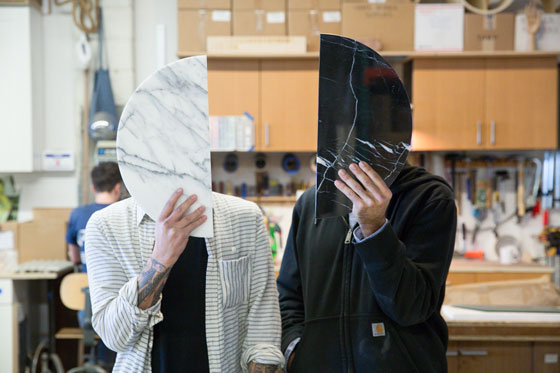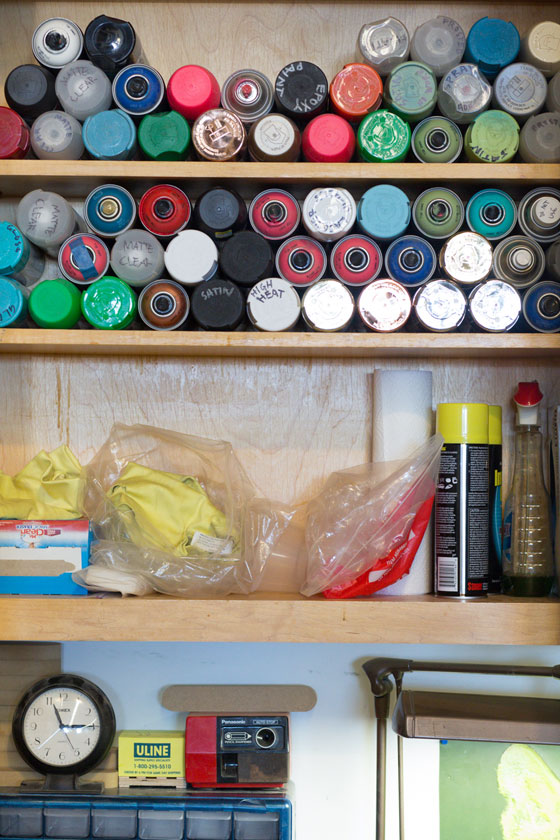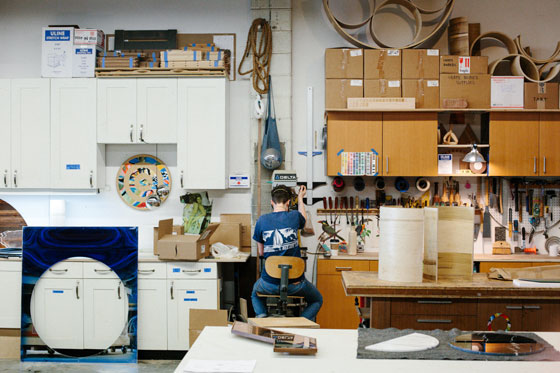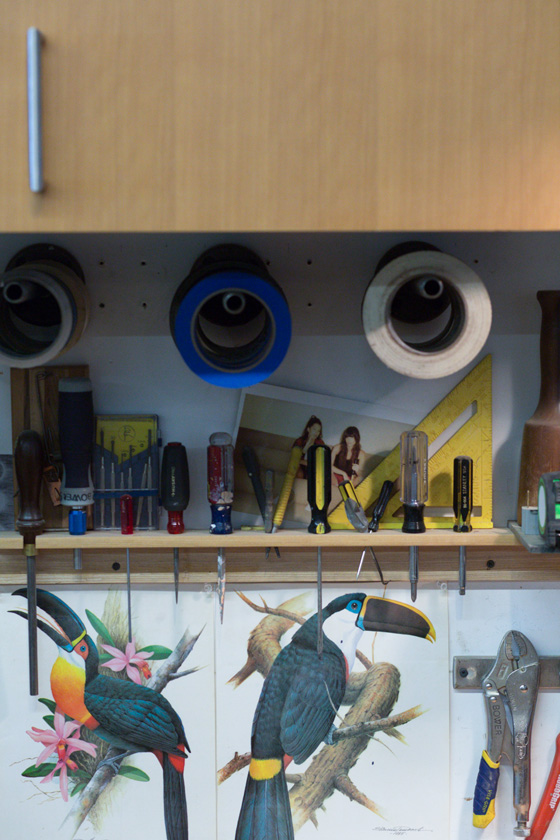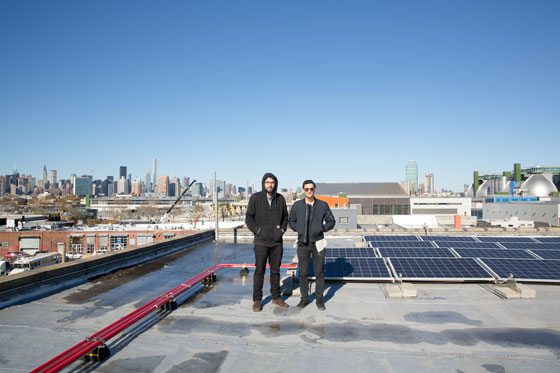WorkOf x Architonic – Greenpoint Studio Tours: Bower
Texte par WorkOf
New York, États-Unis
25.01.16
Tammer Hijazi and Danny Giannella, the design duo behind acclaimed Brooklyn studio Bower, are doing their own thing. In a day and age when everyone has access to everything it’s a tall order to find truly original design and they deliver time and time again.
Tammer Hijazi and Danny Giannella, the design duo behind acclaimed Brooklyn studio Bower, are doing their own thing. In a day and age when everyone has access to everything it’s a tall order to find truly original design and they deliver time and time again. After a breakout year in 2015 their goal moving forward is, wisely, to continue doing what they have always done - problem solve with unbridled creative freedom and distill the AHA moments into genre-bending contemporary design.
How did you the two of you meet and what was the first real project that you collaborated together on as BOWER?
Tammer and I met working as fabricators for a furniture studio in Red Hook, Brooklyn. We primarily worked in the woodshop together where, along with our other buds/co-workers, did a healthy amount of fine woodworking, art fabrication, and clowning around. Tammer and I worked well together, so whenever one of us would pick up a side job, we’d often ask the other for help. While working on side projects, there was a lot of “I had this idea…” coming from both of us. We’d have a very natural back-and-forth that would rapidly snowball into an exciting idea for a product that neither of us could have imagined a few minutes earlier. This creative ping-pong was first spark that led to the start of BOWER.
Our first project as BOWER was the magnetic Key Target. We wanted to turn a mundane routine that most of us share, and put twist on it, along with improving its function in some way.
We thought about the first thing you do when walking into your home; throwing your keys somewhere. The idea of "throwing" your keys sparked the idea of aiming them at some sort of target. That concept quickly evolved into a magnetic key target. Along with making this routine more fun, people often tell us that they don't lose their keys anymore, so we feel like we've also helped solve a problem that many of us share.
You both have a background in fabrication and still have your hands, at some point along the line, on almost every BOWER product. As your studio continues to develop and grow what are your thoughts on your level of involvement on the production side?
At first, having a background in fabrication was crucial to our production, because we were producing almost all Bower pieces ourselves from start to finish. As we grow, our level of involvement on the production side becomes more specialized. We have a diverse community of manufacturers that help us with the more straightforward steps in our production. This frees up time and energy for us to work on the steps that are more unusual and precarious, that often require on-the-spot decision-making that can be extremely subjective. Sometimes a step like this feels like a flaw in the design, and sometimes it feels like the strongest part.
As a follow up to the last question, since founding BOWER has your process of designing new products changed in consideration of how everything will need to produced?
Yes. This just comes from experience…trial and error. In the beginning, it was all about the concept. If we were excited enough about an idea, we’d just force our way through it and ask questions later. Maybe because it felt like questioning the production costs, margins, packaging, etc. could challenge the validity of elements of a design or the entire design itself. It was a romantic, idealistic, stressful, expensive way of working. We’re still very passionate about new ideas, but now we realize that figuring out how to produce them intelligently is a whole other design challenge in and of itself. I think the next stage of enlightenment J will be reached as these two steps become more integrated in our process. This will be easier to achieve for designs involving materials and manufacturing that build experience with, but (hopefully) there will always be some weird new idea that keeps us out of our comfort zone.
In terms of the BOWER aesthetic - (which I feel is really unique to everything you produce) has this been a conscious process that you discuss and manage closely or is it based on shared trust - i.e. you both agreeing that a given design is right?
Our aesthetic naturally evolves through the way we work. We begin our process in a sort of “free zone” where anything goes. This is such a refreshing place to be. It’s where we allow our creativity to stretch before we start making more conscious decisions. When we get stuck, we pull back into our “free space”…that’s where we stumble upon the true gems. The aesthetic may start out one way, but change as it filters through our process.
Approaching the New Year, it seems like 2015 has been a big year for BOWER in a lot of ways. What are a few highlights from this past year that really stood out and what are you most excited about for the year to come?
2015 has been a process of figuring out who we are, and communicating that to the world. As we filled out our furniture collection, our language has become more coherent. The core of our identity still lies in our process, which we’ve refined this year as well, but the manifestation of that process, our body of work, has brought more clarity to who we are.
We got some great press this year. It’s been a great way for people all over the world to get introduced to BOWER. It’s also given architects and interior designers more confidence in our company, leading to some amazing opportunities that we may not have had otherwise.
---
